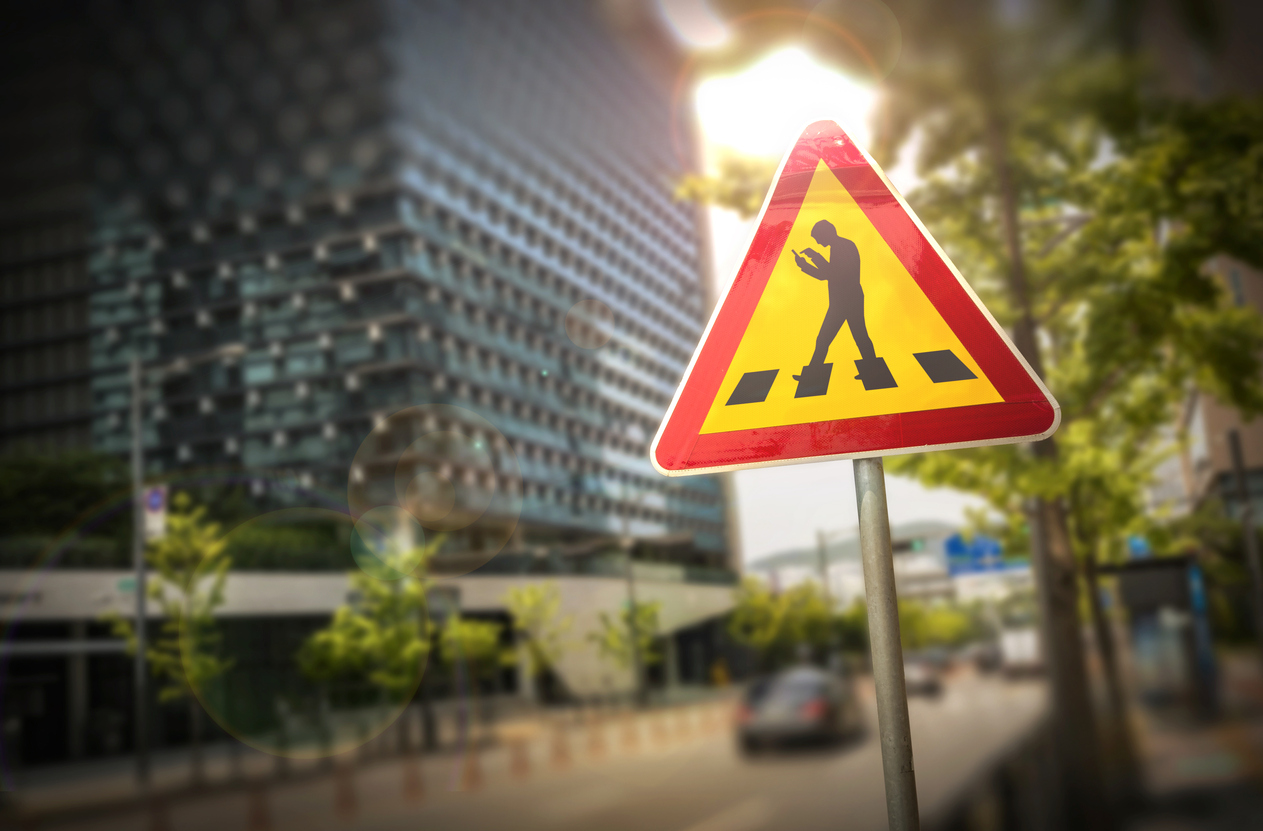The Hawaiian capital of Honolulu has become the first city in the world to ban pedestrians from texting while crossing the road.
Part of a worldwide ‘smartphone zombie’ crackdown, the legislation aims to reduce injuries and deaths caused by distracted walking.
The common-sense law states that it allows Honolulu police to issue fines starting at US$35 to anyone “viewing electronic devices while crossing streets in the city and surrounding country”. Multiple violations could trigger fines as high as US$99.
“This is really milestone legislation that sets the bar high for safety,” Brandon Elefante, the council member who first proposed the bill in January, told The New York Times.
According to the US Governors Highway Safety Association, there were 5,997 pedestrian deaths in America in 2016 – an 11% increase from 2015 and the highest casualty rate since 1990.
“We hold the unfortunate distinction of being a major city with more pedestrians being hit in crosswalks, particularly our seniors, than almost any other city in the county,” said Honolulu Mayor Kirk Caldwell.
We hold the unfortunate distinction of being a major city with more pedestrians being hit in crosswalks, particularly our seniors, than almost any other city in the county
The ban is backed by research from the World Health Organization, revealing that distracted walkers are nearly four times more likely to jaywalk or forget to look both ways, and on average take 18% longer to cross the street.
The non-profit US National Safety Council has added ‘distracted walking’ to its annual compilation of the biggest risks for unintentional injuries and deaths in the US, highlighting the severity of the issue.
“Cell phones are not just pervading our roadways but pervading our sidewalks too,” Maureen Vogel, a spokeswoman for the Council told Reuters.
Other countries keeping ‘smartphone zombies’ safe
Municipal laws are not tracked, but the small US town of Rexburg, Idaho may have been the first to implement a citywide prohibition in 2011 following a string of local civilian deaths supposedly started by preoccupied pedestrians. “We’ve not had a pedestrian fatality since,” Stephen Zollinger, Rexburg’s city attorney, told The New York Times.
Edgy street signs have been erected in Hayward, California, with this message for pedestrians: “Heads Up! Cross the Street. Then Update Facebook.”
Last year, Mumbai imposed ‘no-selfie zones’ after 19 people were killed in selfie-related accidents over three years.
Other regions have focused less on changing behaviour and more on making roads and walkways safer. In 2014, the city of Chongquing in China unveiled a footpath lane specifically designated for cellphone users, cautioning them to walk at their own risk.
Like to walk while texting? Chinese city unveils sidewalk lane for mobile addicts http://t.co/8okDdnaqjp pic.twitter.com/Dx9Lah4sGc
— WSJ Asia (@WSJAsia) September 16, 2014
London has experimented with padding lamp posts to soften the blow for distracted walkers, according to the Independent newspaper.
Meanwhile, Augsburg in Germany has embedded LED traffic light signals into pavements near tram tracks to catch the attention of downward-fixated phone users. A similar approach has been used at two pedestrian crossings in Singapore and in the small town of Bodegraven in Amsterdam.
Opponents argue cellphones aren’t the issue
Expectedly, the law was not met with unwavering support, with many claiming that it infringes on their personal freedom and amounts to government overreach. Others argue that engineering safer roads, expanding transit options, lowering speed limits or enforcing stricter rules for both driver and pedestrian would be far more effective.
“Scrap this intrusive bill, provide more education to citizens about responsible electronics usage, and allow law enforcement to focus on larger issues,” Honolulu resident Ben Robinson told the city council in written testimony.
It was also met with opposition on social media.
#Honolulu blames and punishes #Pedestrian victims for "texting" while #walking. Seriously lousy measure. https://t.co/Am8iK4Wjn2
— Rudy Owens (@RudySDOwens) August 29, 2017
.@TheOnion with the perfect rejoinder to Honolulu's new texting-while-walking law https://t.co/E6AOjUqjow pic.twitter.com/Ktg3Hms4ot
— Streetsblog USA (@StreetsblogUSA) August 2, 2017
Autonomous cars could reduce distracted driving deaths
Texting while driving is banned in 46 US states and many countries worldwide; however, this law is difficult to enforce and as a result traffic fatalities continue to rise.
According to the US National Safety Council, in 2015, 4.4 million people were injured and 35,092 people were killed – a 7.2% increase over 2014 – with 10% of those deaths the result of a distracted driver.
Many believe that autonomous cars could be the answer to this growing problem. Deborah Hersman, CEO of the US National Safety Council, says: “Technology got us into this situation. I think it has the potential to get us out of it.
“It’s just really easy to see how technology could help us drive those fatalities down to zero. But when it comes to the in-between time, before every vehicle is automated, it’s going to be even messier. I think the onus is ultimately on the driver. We’ve got to shift our thinking as a society.”
Social media users have jumped online to show their support for the campaign against distracted driving, using #ItCanWait.
I just pulled off the road to use my phone because the book title I want to remember is not more important than the life/lives of my fellow commuters. #ItCanWait
— Princess Pea 👑 (@Princess_Pea_3) October 22, 2017
Don’t let one post cause you to miss out on a lifetime of memories. Take the pledge, and remember, when you’re driving, #ItCanWait #HR4HR
— joe morris (@thatsjustjoe101) October 23, 2017







